Grandmaster Narrie Babao Interview:
The Evolution of Babao Arnis
By Zena Sultana Babao
Originally published in FMA Digest
It was not until we moved to the United States in 1973, when I learned that my husband, Narrie Babao, is an expert in the Filipino martial arts called Arnis de Mano. This was four years after we were married. At that time, the Filipino combative arts were really secret arts, passed down within the family.
Narrie told me that his father, the late Buenaventura “Turing” Babao, started teaching him the Batangas method of Arnis in 1963, three years before we met. All I knew was that Narrie was a black belt in karate.
 Narrie and I met on a blind date. I was a reporter for Naga Times in the Philippines, when I was asked by Rafael Plantado to become the master of ceremony for his karate club’s benefit demo, dinner and dance.
Narrie and I met on a blind date. I was a reporter for Naga Times in the Philippines, when I was asked by Rafael Plantado to become the master of ceremony for his karate club’s benefit demo, dinner and dance.
Rafael Plantado was the owner of the Griffins Karate Club, the largest of the martial arts schools in Naga City at the time. Rafael was assisted by his elder brother, Romeo “Romy” Plantado, in teaching judo and Shotokan karate.
One of their brown belts, Narrie Babao, was selected to pick me up, and be my official escort. During the karate demonstration, the Plantado brothers broke boards and concrete cinder blocks with their bare hands and feet.
Narrie demonstrated his expertise in breaking a large flat stone, and a thick empty bottle of Coca-Cola. The broken bottle nicked his right hand in the process. He showed me the cut, and I offered my handkerchief to stop the bleeding.
The crowd went wild during the sparring exhibitions. And to add that cinematic effect, the live band played the “James Bond Theme”. Romy asked four of the students to fight him at the same time, and none of them scored on Plantado. After a minute, Romy asked to spar with Narrie.
At first the crowd was perplexed when they saw spots of red blood on Romy’s white gi. They later realized it was from Narrie’s bleeding hand. The finale of the sparring exhibition was when the Plantado brothers fought each other. It was hard to tell who outscored whom.
 After a few months, the Griffins Karate Club sponsored the first karate tournament in the Bicol region. Most of the competitors were from the Griffins, followed by the Tigers Karate Club, which was composed exclusively of practitioners of Chinese descent.
After a few months, the Griffins Karate Club sponsored the first karate tournament in the Bicol region. Most of the competitors were from the Griffins, followed by the Tigers Karate Club, which was composed exclusively of practitioners of Chinese descent.
The unique thing about this tournament was that there were no particular divisions. The year was 1966, and karate was still new in the Philippines.
All the competitors were mixed: white belts, green belts, brown belts, and black belts. After the eliminations and semifinals, only one will become the ultimate champion.
By the luck of the draw, the Plantado brothers fought each other in the earlier rounds. Romy did his best to outscore his brother Rafael. The blows and kicks were supposed to be controlled, but anybody who ever sparred with Romy Plantado knew otherwise. Back then there were no groin cups, no mouth pieces, nor pads to protect the hands, feet, shin, and elbow.
In the second group, Narrie worked his way to the semifinals by easily eliminating his opponents. The semifinals were composed of two pairs of competitors: Narrie versus Romy Plantado, and the other pair was between another brown belt and an unknown white belt.
Narrie lost by one point to Plantado. For the championship, Plantado had to fight the unknown white belt, who eventually won the match. The crowd knew very well that if the match had been to the death, Plantado would emerge the winner.
That tournament was the last time the general public witnessed Romy Plantado fight in friendly matches. A former police officer in Naga City, Romy Plantado became a fugitive when he was wrongly accused of killing a suspect during an interrogation.
Although Narrie was well qualified to test for black belt, the Plantado brothers did not have any certificate to award in their school. Narrie was always meticulous when it comes to being certified as a martial arts instructor.
A friend of his convinced Narrie to travel to Manila and take a crash course in the Black Master Sphinx Karate system, under Master Jimmy Galez, the first karate instructor of the NBI (National Bureau of Investigations).
 In a short span of time, Narrie learned a lot from Jimmy Galez. He was promoted to the rank of first dan, and Narrie became the leading exponent of Sphinx Karate in the Bicol region. Narrie even went as far as Dalaguete, Cebu, his mother’s hometown. And after being asked by Fr. Jose Cervantez, the parish priest, Narrie agreed to teach karate to the church’s altar boys.
In a short span of time, Narrie learned a lot from Jimmy Galez. He was promoted to the rank of first dan, and Narrie became the leading exponent of Sphinx Karate in the Bicol region. Narrie even went as far as Dalaguete, Cebu, his mother’s hometown. And after being asked by Fr. Jose Cervantez, the parish priest, Narrie agreed to teach karate to the church’s altar boys.
He stayed for around three months in the church’s convent, just meditating and teaching the altar boys. His mentoring came to a sudden halt when he received notice to report to Sangley Point in Cavite, for a written and physical exam, the first process in enlisting with the United States Navy.
Narrie preferred to join the United States Marine Corps, but that window of opportunity was not open yet. The only agreement between the governments of the Philippines and the United States was for Filipino men to enlist with the Navy.
In February of 1968, Narrie swore his allegiance to defend the United States from all enemies, both foreign and domestic. After the basic boot camp in San Diego, Narrie was assigned to a brand-new amphibious and helicopter assault carrier, the USS New Orleans.
Some of the crewmembers had seen Narrie practicing his karate katas, and they too wanted to learn. One of his students was a Navy lieutenant, who was a karate brown belt. Two enlisted men from the Marine Amphibious Unit also joined.
 It was at this time when Narrie first started teaching the Arnis that he learned from his father. No doubt that it is a very effective form of fighting even back then, when Arnis was not yet classified as a bona fide martial art.
It was at this time when Narrie first started teaching the Arnis that he learned from his father. No doubt that it is a very effective form of fighting even back then, when Arnis was not yet classified as a bona fide martial art.
During one of the Marine’s amphibious missions, one of Narrie’s Marine students was flown back to the ship in a body bag. Narrie had nothing to do with this. While not patrolling the Vietnam waters, the New Orleans would dock in Subic Bay, Philippines, for loading of provisions and for necessary repairs.
Narrie and I got married in September 1969. The ship was in the Philippines, and Narrie to his first annual military ok leave.
Subic Bay is located in Olongapo City. Narrie found out that Carlito Lanada opened a Philippine Kuntaw headquarters in Olongapo City. When Lanada visited the Griffins karate club in Naga city in 1966, he was still endorsing Latino Gonzales, the grand old man of karate in the Philippines.
During his visit to Naga in 1972, Narrie learned that his former sensei, Romeo Plantado, was recaptured and was in the custody of the PC (Philippine Constabulary). He was captured a year earlier by the local police.
 However, Plantado managed to overpower the prison guards, killing one of them, and escaped with two Carbine rifles. This time, Plantado was in his own isolated cell inside the PC compound. Being a police reporter, I was able to convince the PC provincial commander to let us interview Plantado.
However, Plantado managed to overpower the prison guards, killing one of them, and escaped with two Carbine rifles. This time, Plantado was in his own isolated cell inside the PC compound. Being a police reporter, I was able to convince the PC provincial commander to let us interview Plantado.
We even brought along our first born, Narrison, who was in a baby carrier. Plantado was happy to see us, and he did not hold anything back during the interview. He said he had to shoot the prison guard, because that guard was in the way of his prison break.
When the topic went back to Plantado’s first case about the teenage suspect who died while in police custody, he vehemently denied having killed the boy. He told Narrie he only slapped the kid.
The killing that Plantado was really proud of was when he fought another toughie in Naga City in a mutual combat. This happened when Plantado was a fugitive. It was a flying front kick to the chest that felled the other guy.
Plantado left the scene, unsure if his opponent was dead. The downed opponent was dying when the police reached the scene. He was able to tell the cops that he fought Plantado in a hand-to-hand combat. Narrie found it hard to believe that Plantado’s flying kick actually killed his opponent.
It was not until years later, after Narrie studied CPR, that a broken sternum on a person’s chest could do more harm than good on that person’s heart. Plantado told us a movie producer from Manila already wanted to make a movie about his life. He was advised that the only setback was that he was still alive.
Narrie was planning to write an article about Romy Plantado for Black Belt magazine, so he was wondering if we could go to a nearby karate studio for a photo session. Again, I was the one who asked the PC Provincial Commander to accommodate us. So with two armed PC troopers watching, Narrie and Romy showed their karate skills for the camera.
We escorted Plantado back to his cell, and said our goodbyes. Once we got home, I realized that the .22 caliber revolver that Narrie gave me was inside my purse all along. I think because of my being a reporter, the PC troopers never bothered to inspect my purse.
We found out years later that Plantado once again escaped, and joined the Communist-influenced New People’s Army (NPA). He rose up through the ranks, and his nome de guerre was Commander Romy.
The Black Belt magazine rejected Narrie’s article, explaining that it was too violent. It was not until 2004 when we learned that Romy Plantado passed away in Naga City due to heart failure. In 1973, we relocated to San Diego, California. We have two sons then: one-year old Narrison, and newly born Jack.
It seemed Narrie could not wait to impart his martial arts knowledge to his sons. It was at this period when I found out that Narrie studied Arnis de Mano from his father.
During the 1920’s, Turing Babao learned the Baston Batangas Arnis from Ka Juan, a Katipunan rebel under General Miguel Malvar of Batangas. The practitioners of this system were not called Arnisadors or Mag-aarnis.
They were referred to as Bastoneros. Turing’s training partner under Ka Juan was his cousin, Nacing BabaoTrillanes.
Turing Babao did not teach his Arnis system to anyone else but to Narrie. Their training started in Naga City in November of 1963, when Narrie was 18 years old.
His father was suffering from hypertension, and the doctor advised him to pursue an active work out. Turing wanted to hit two birds with one stone, to get back into physical fitness, and to impart his martial arts knowledge.
Narrie was actually a reluctant disciple of Arnis. He had other interests. Foremost were bodybuilding and weightlifting. A year later, Narrie won the Jr. Mr. Philippines title, which was sponsored by the Philippine Weightlifting and Bodybuilding Association, which was headed by former Mr. Philippines, Eldy Doroteo.
For two years, the father and son trained hard in Arnis. Their training consisted mainly of free-style sparring with one stick, two long sticks, or with a long and a short stick. Only after getting hit would Narrie learn the lesson for the day. His father would methodically explain why he got hit.
That was the old school of Arnis, the School of Hard Knocks. His father was precise in controlling his strikes to the body and head, but hits to the knuckles were unavoidable. With his knuckles busted many times over, Narrie looked for a good excuse to take a sabbatical from Arnis training. He enrolled at the Griffins karate school, and that’s how we met.
 Every time Narrie went on leave in the Philippines, he would consult his father about Arnis techniques. Without a regular sparring partner, Turing’s Arnis workouts diminished. He finally passed away, after a third stroke, in 1974.
Every time Narrie went on leave in the Philippines, he would consult his father about Arnis techniques. Without a regular sparring partner, Turing’s Arnis workouts diminished. He finally passed away, after a third stroke, in 1974.
Narrie had about a dozen of students at the Naval Training Center gym. The curriculum then consisted of Arnis and the barehanded Kuntao. Both of us joined the now defunct San Diego County Martial Arts Alliance.
When Narrie told the president that his style was a mixture of Arnis and Kuntao, the president who was a Lima Lama blackbelt instructor queried, “What kind of animal is that?” The members of the Alliance finally saw their first glimpse of the Filipino martial arts when Narrie started competing in tournaments.
Stickfighting contest was still unheard of at that time, so Narrie had to contend in joining the Weapons Forms events.
Most of the time, Narrie and Ted Tabura, the Kama king, would vie for the championship trophy. In the history of Ed Parker’s annual Long Beach Internationals tournament, Narrie was the first practitioner to demonstrate the use of the balisong knife in the weapons form competition.
 It was sometime in 1975 when we met Danny Inosanto and his then partner, Richard Bustillo. Years earlier, Narrie had read that Dan was Bruce Lee’s top student in Jeet Kune Do. He thought that Dan was Japanese.
It was sometime in 1975 when we met Danny Inosanto and his then partner, Richard Bustillo. Years earlier, Narrie had read that Dan was Bruce Lee’s top student in Jeet Kune Do. He thought that Dan was Japanese.
It was not until reading an article in Inside Kung-fu about Eskrima, did Narrie learn that Dan was of Filipino descent. In a letter to the editor Narrie mentioned that he was a practitioner of Arnis de Mano, which was another method of Filipino fighting system.
Dan saw the letter to the editor, and that was how the flow of communication started.
 On weekends, we would travel to the Filipino Kali Academy, and Dan and Narrie would constantly exchange Arnis, Kuntao and Eskrima techniques.
On weekends, we would travel to the Filipino Kali Academy, and Dan and Narrie would constantly exchange Arnis, Kuntao and Eskrima techniques.
A year later, I gave birth to our youngest son, Kris, who was named after the wavy Moro blade. Dan Inosanto became our “kumpadre”, when he became the godfather of Kris.
It was also in 1976 when Inosanto introduced Narrie to Kali Master Ben Largusa, who accepted him as a disciple. It was in November of that same year, when Narrie and Inosanto formally introduced the arts of Arnis and Eskrima to the people of San Diego, California.
 In July 1978, Narrie became the first Weapons Sparring Champion at a tournament sponsored by Kyukushinkai instructor Ben Singleton of Vista, California. This type of competition was the first of its kind in the American martial arts scene.
In July 1978, Narrie became the first Weapons Sparring Champion at a tournament sponsored by Kyukushinkai instructor Ben Singleton of Vista, California. This type of competition was the first of its kind in the American martial arts scene.
The head referee was Solomon Kahewalu of the Hawaiian Lua system. Narrie defeated other fighters who used esoteric weapons like the Nunchakus, Bo, and Shinai.
It was also on that same year when Narrie was promoted as Kali Guro’ by then Grandmaster Floro Villabrille and Grandmaster Ben Largusa.
It was in 1981 when Doce Pares Grandmaster Cacoy Canete arrived in the United States. He conducted a seminar at the Filipino Kali Academy, and that was how we met Manong Cacoy. Narrie was captivated by the close quarter combat fluidity of Eskrido, which was developed by Grandmaster Cacoy in 1948.
During his visit to the Cebu City Doce Pares headquarters in 1984, Narrie was promoted to the rank of 4th Grade Blackbelt. He met the elder Canete brothers, Grandmaster Yoling and Grandmaster Momoy. He also met the legendary Master Vicente “Inting” Carin and Grandmaster Diony Canete.
 It was also in 1984, when Narrie was able to change his rating in the U.S. Navy from that of a Mess Specialist to that of a Master-at-Arms (MAA). In fact it took an “act of Congress” for him to change his rating.
It was also in 1984, when Narrie was able to change his rating in the U.S. Navy from that of a Mess Specialist to that of a Master-at-Arms (MAA). In fact it took an “act of Congress” for him to change his rating.
Narrie requested to change his rating twice, and both times was turned down by the Navy’s Bureau of Personnel. Narrie was told that the Mess Specialist rating was in a critical level, that the changing of ratings was not encouraged.
At the time, Congressman Duncan Hunter was still new at the House in Washington. He was aware of my articles in the local newspapers endorsing his candidacy since the first time he ran for Congress.
We campaigned for Hunter, since he was a Vietnam veteran. He actually defeated an incumbent San Diego congressman, Lionel Van Deerlin. After he was elected, he appointed me as one of his advisers. I mailed a letter to Congressman Hunter regarding Narrie’s situation in the Navy.
 In less than a month, Narrie received a memo from Congressman Hunter that he personally passed by the Bureau of Personnel and talked to the people in charge. Within a week, Narrie received a message from the Navy that he was allowed to change jobs.
In less than a month, Narrie received a memo from Congressman Hunter that he personally passed by the Bureau of Personnel and talked to the people in charge. Within a week, Narrie received a message from the Navy that he was allowed to change jobs.
The Master-at-Arms rating was the first designated rating in the U.S. Navy. The MAA’s original duties include being the keeper of the armory, and enforcer of the ship’s regulations. The modern MAA’s functions the same as that of the Military Police.
Narrie was on board the USS Belleau Wood when he converted as MAA. Right away, the ship’s Chief Master-at-Arms assigned him his first project- to retrain the ship’s MAA force and Shore Patrol in a better method of using the wooden baton and the steel Maglite flashlight.
At the time, the Navy’s training manual was based on the Koga method of baton techniques. Robert Koga was a defensive tactic instructor for the LAPD.
Back in the Seventies, the CHP (California Highway Patrol) was the model agency for the other law enforcement groups in the state. Whatever the CHP would advise and adopt, the other agencies would usually follow.
The training was usually done through the POST (Police Officers Standards and Training) course in Sacramento. Before the CHP replaced their straight baton with the side-handled baton called the Prosecutor (PR-24), which was modeled after the Okinawan tonfa, the CHP’s top brass asked the opinion of Officer Ted Mason.
Ted was our fellow member at the San Diego County Martial Arts Alliance. He was one of Tang Soo Do Grandmaster Hwang Kee’s blackbelt, and he owned a dojang in Oceanside, California. Ted was also an avid Kendoka, and was often called as an expert witness in court trials, whenever an Asian hand held weapon was used in a crime.
During the Alliance’ monthly meeting, Ted Mason asked Narrie’s opinion about the CHP’s dilemma. In an impromptu demonstration, Narrie clearly proved that compared to the straight baton, the PR-24 is a poor substitute. Narrie even proved that contrary to what they saw in Kung-fu movies, the straight stick was still superior to the nunchaku.
Ted recorded the demo with an old-fashioned Betamax video camera. The demo ended after Narrie disarmed a nunchaku attack. The nunchaku went flying and punctured the drywall of the dojo, where the meeting was held. Ted Mason brought the videotape with him, and presented it to his superiors in Sacramento.
According to Ted, the top brass were awed by Narrie’s handling of the baton. However, they concluded that the Arnis techniques were too complicated for the future cadets to learn at police academies. Before long the CHP adopted the side-handled PR-24 in lieu of the straight baton. Everyone in the Belleau Wood agreed that the baton techniques Narrie was teaching was far superior to that of the Koga method.
Even the veteran MAAs would not dare try their baton skills against him. When asked, Narrie would casually explain that the techniques he was teaching had its roots in the Filipino martial arts.He would teach the use of a single baton to new personnel. The veteran MAA’s could learn the simultaneous use of a baton and steel flashlight, which Narrie actually based on the Espada y daga techniques.
When dealing with drunken sailors or riots among the crewmembers and Marines, the MAA’s and Shore Patrol do not depend on drawing a sidearm. The baton is their main tool in preserving the peace.
Within a year after changing his rate, Narrie was promoted as a Master-at-Arms Chief. While on shore duty for three years, Narrie attended various military schools that pertain to shipboard security and counter terrorism. The various instructors included former Navy Seals and Delta Force members.
 Sometime during the Eighties, I had the honor of interviewing the great Filipino boxer, Ceferino Garcia, for an article with a local paper. During his prime, Garcia was the World Middleweight boxing champion. He decided to spend his twilight years in San Diego.
Sometime during the Eighties, I had the honor of interviewing the great Filipino boxer, Ceferino Garcia, for an article with a local paper. During his prime, Garcia was the World Middleweight boxing champion. He decided to spend his twilight years in San Diego.
He was in his late eighties during my interview, and he was impeccably dressed in a suit. When he learned that Narrie is a Filipino martial arts instructor, Garcia removed his coat and the two of them worked on boxing techniques.
Needless to say, Narrie remains on record as the last man taught the wicked “bolo punch” by Ceferino Garcia. A few years after the interview, Ceferino peacefully passed away in his sleep.
When Saddam Hussein invaded Kuwait in 1990, Narrie was not only the Chief Master-at- Arms, but also the Assistant Physical Security Officer of the USS Jouett.
 The USS Independence Battle Group was the first line of defense that President George Bush sent to intercept an oncoming threat from the Iraqi Air Force.
The USS Independence Battle Group was the first line of defense that President George Bush sent to intercept an oncoming threat from the Iraqi Air Force.
The Jouett, which was positioned 200 miles ahead, was the main escort of the Independence. If the Independence was the spear of the U.S. defense, then the Jouett was the tip of that spear.
While the White House and the Pentagon were planning on how to drive the Iraqis out of Kuwait, it was the Independence Battle Group that was guarding the Persian Gulf.
After a thorough demonstration of their abilities in handling shipboard security, the highest-ranking SEAL officer in the Persian Gulf endorsed that the Jouett Securit team was capable of becoming a Boarding Party, whose purpose was to inspect any suspected vessel going to or coming from the port of Basra in Iraq.
The Jouett’s Boarding Party was fully trained by Narrie, who eventually received a letter of commendation from Rear admiral Unruh, the highest- ranking Navy officer in the region.
In his quest to become the first Filipino martial artist to have used a balisong in modern warfare, Narrie asked the permission of the ship’s Executive Officer to let carry the knife. Being in a war zone, the XO agreed to look the other way. Narrie concealed the balisong inside his right combat boot.
Months earlier, Narrie confiscated the balisong from an erring sailor, who was eventually dishonorably discharged. Narrie was about to dump the balisong into the ocean, when Saddam’s troops invaded Kuwait.
 In 1996, Grandmaster Cacoy conferred to Narrie the rank of 6th Grade Master of Doce Pares Eskrima. Then in October 25, 1997, Narrie was again promoted to the rank of 8th Grade Master. On June 9, 2007, Grandmaster Cacoy promoted Narrie to the rank of 9th Grade Grandmaster.
In 1996, Grandmaster Cacoy conferred to Narrie the rank of 6th Grade Master of Doce Pares Eskrima. Then in October 25, 1997, Narrie was again promoted to the rank of 8th Grade Master. On June 9, 2007, Grandmaster Cacoy promoted Narrie to the rank of 9th Grade Grandmaster.
Like the three sides of the triangle, the current Babao Arnis system is composed three combative methods: the Villabrille- Largusa Kali, Grandmaster Cacoy’s Doce Pares Eskrido, and the original Batangas Arnis taught by Turing Babao.
The practitioners are required to learn different angles of attacks and basic defense. They are also trained to instantly switch mindset when dealing with sticks, with sharp blades, or barehanded techniques. The entire curriculum is composed of 24 units.
Having actually experienced fighting other martial arts instructors who used other Oriental weapons, Narrie incorporated fighting techniques against nunchakus, shinai or bo attackers.
Unlike some instructors who teach their students everything they know, Narrie always reminds his students that 20% of what he knows would not be taught, except to the chosen future successor.
 In light of that, the system’s curriculum is documented in the Babao Arnis Training Manuals. Composed of six volumes, it is not available to the general public but only to the Guros and advanced students.
In light of that, the system’s curriculum is documented in the Babao Arnis Training Manuals. Composed of six volumes, it is not available to the general public but only to the Guros and advanced students.
Guro’ Dave Bertrand, a retired member of the ego Police SWAT Special Response Team, was instrumental in the development of the training manuals. It describes in detail the various forms and techniques.
The grand design of the manuals is for the Guros to have a uniformed way of teaching the system.
Narrie refused to have the last six units included. This way, the Guros would readily have the 20% advantage over their own students. Most of Narrie’s students were already black belts in the other martial arts when they started their Arnis training.
At present, some of the students are in law enforcement. Three of the students are Defensive Enforcement Training Academy. They are Chris Cross (Regional Academy coordinator), SDPD Sgt. Romeo de los Reyes, and SDSU Police trainer Marc Fox, who is a lso a 5th dan Blackbelt in Aikido.
There are also students who are police detectives, a DEA agent, and an Air Marshall, who Narrie prefers not to identify. Some of Narrie’s noted former students include Cliff Steward, the former bodyguard of Mr. T, and Graciela Casillas, a female martial artist extraordinaire.

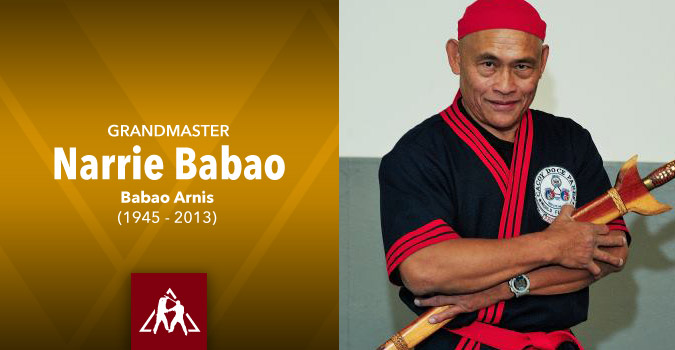

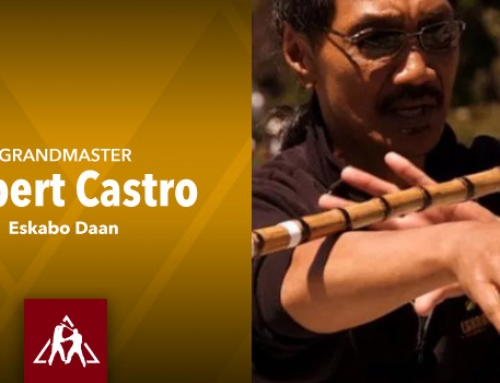
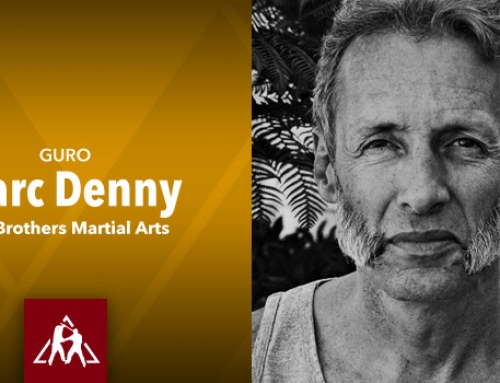
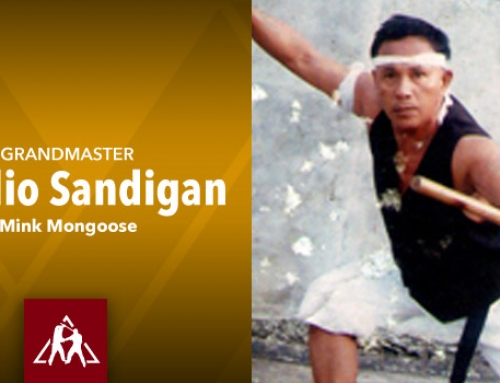

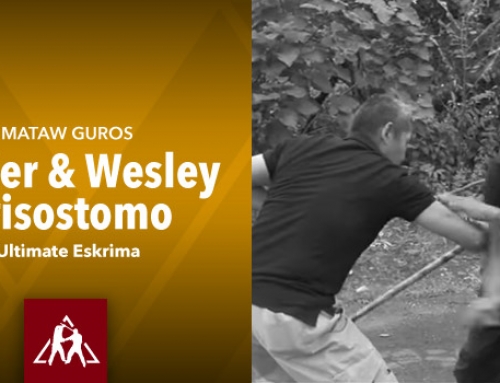
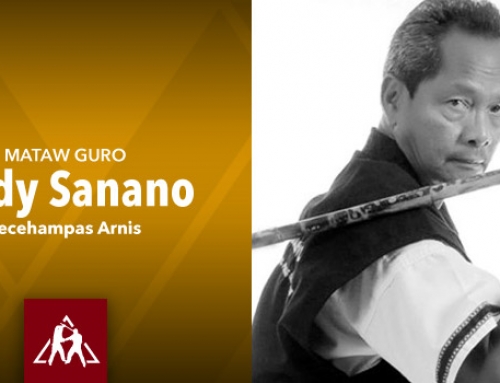
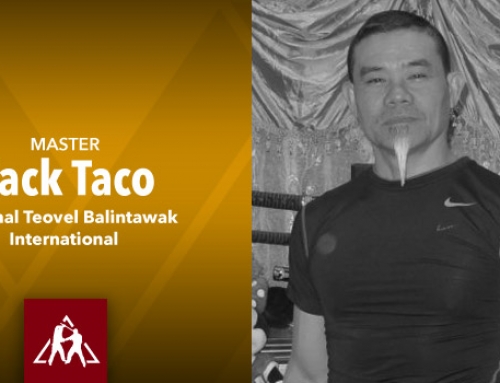
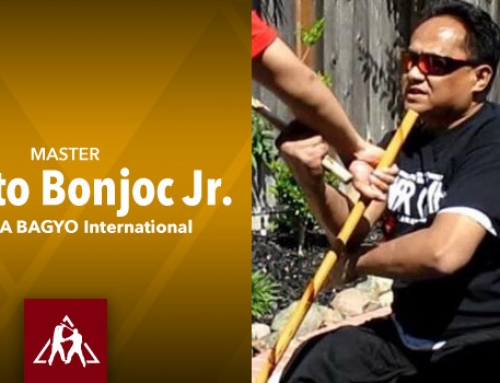
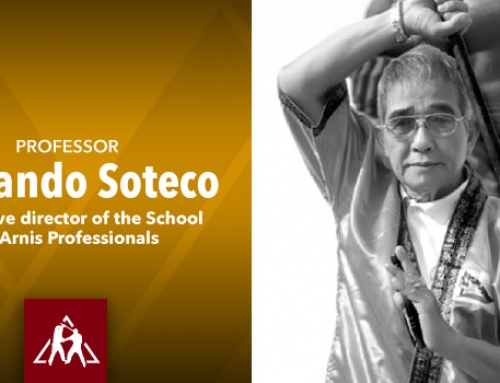
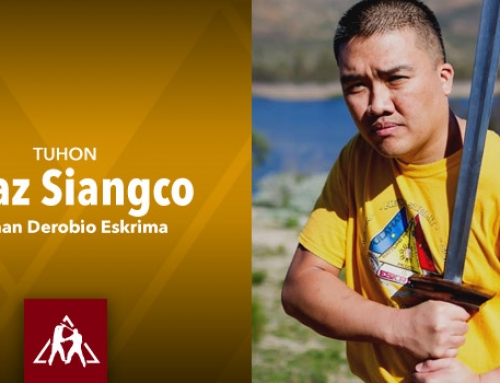

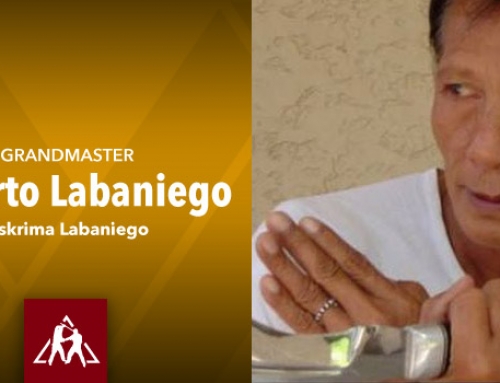
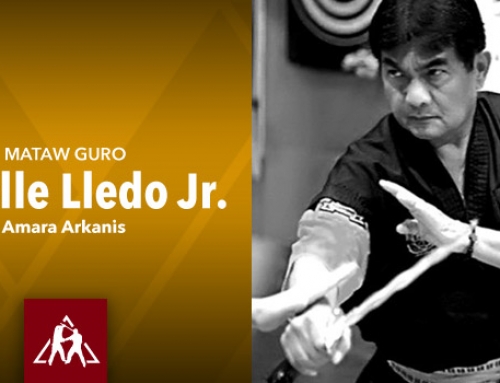

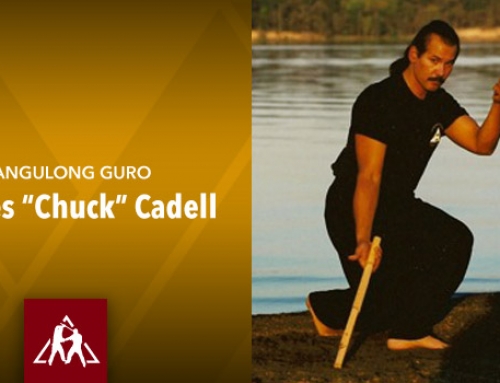




Leave A Comment
You must be logged in to post a comment.